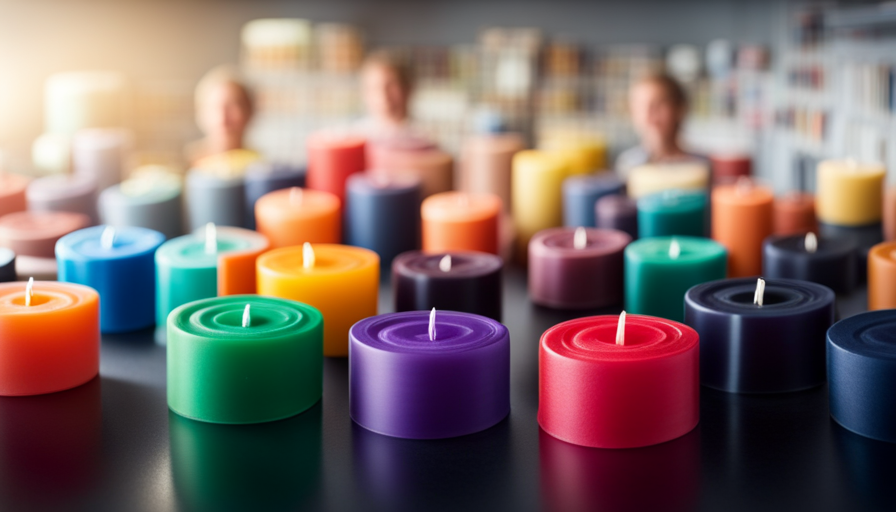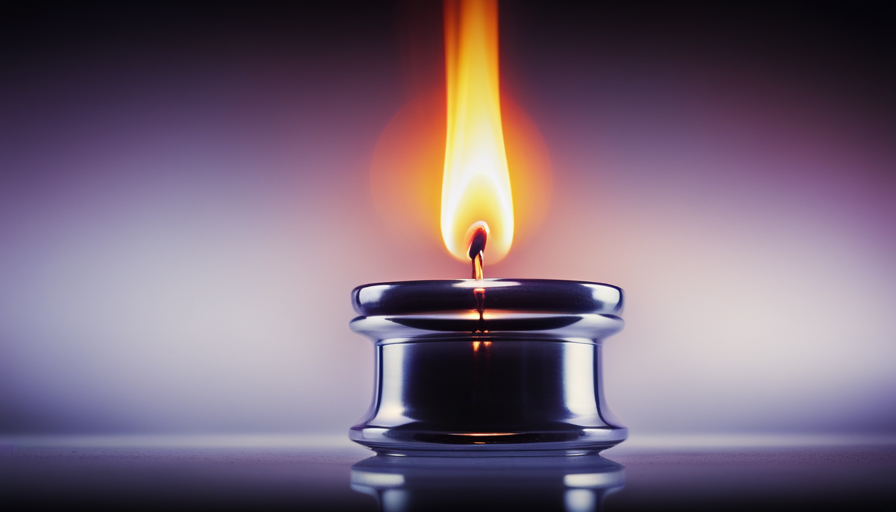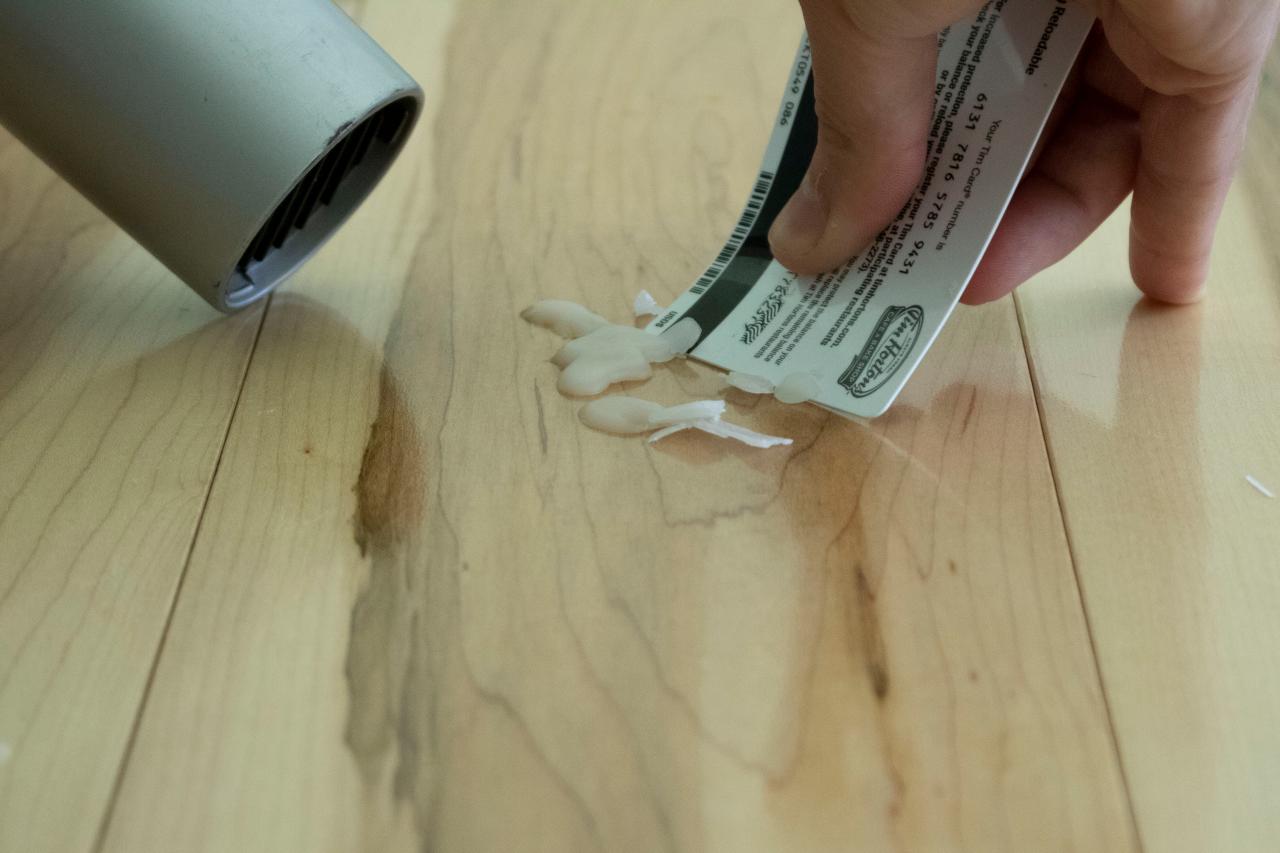Within the vast world of candle making, wax is the essential ingredient that brings light and warmth to our creations. Just like a sculptor works with clay, we artisans mold and shape the wax into beautiful, fragrant pieces of art. But the question remains: where can you find this magical material? Fear not, dear candle enthusiasts, as I am here to guide you through the intricate process of obtaining wax.
Imagine a treasure trove of waxy wonders, where creativity knows no bounds. From local craft stores bursting with vibrant colors and scents, to online retailers offering a world of options at your fingertips, the possibilities are endless.
Specialty candle supply stores beckon with their extensive selection, while farmers’ markets tempt us with homemade goodness. For the frugal candle maker, wholesale suppliers offer bulk quantities at affordable prices. Art supply stores and hobby shops cater to our creative cravings, ensuring we never run out of inspiration. And let us not forget the digital realm, where DIY supply websites hold a wealth of resources.
For those who desire a more intimate connection with nature, seek out local beekeepers or apiaries for beeswax, a gift from our buzzing friends. So, fellow candle enthusiasts, let us embark on this journey together, as we uncover the finest sources to procure the wax that gives life to our luminous creations.
Key Takeaways
- Craft stores, online retailers, specialty candle supply stores, and farmers’ markets are all viable options for purchasing wax for candle making.
- Buying wax in bulk from wholesale suppliers can save money and ensure a steady supply.
- Beeswax candles are a popular choice due to their clean-burning and longer burn time.
- Local beekeepers or apiaries are a sustainable source for high-quality and pure wax, supporting the beekeeping community and promoting sustainability.
Local Craft Stores
If you’re looking to buy wax for candle making, you’ll find some awesome options at your local craft stores! Craft store selection is a great option for purchasing wax because they usually carry a wide variety of options to choose from. You can find different types of wax such as paraffin, soy, and beeswax, each with its own unique qualities that can enhance the quality of your candles.
Additionally, craft stores often offer wax in various colors and scents, allowing you to get creative with your candle-making projects.
One of the advantages of buying wax from local craft stores is that you have the opportunity to compare pricing. Different brands may offer their wax at different price points, and craft stores often have multiple brands available. By comparing the prices, you can find the best deal that suits your budget. Craft stores also frequently have sales and discounts, so keep an eye out for those to save even more money on your wax purchases.
As we move on to the next section about online retailers, it’s important to consider all your options before making a decision on where to buy your wax.
Online Retailers
One interesting fact is that online retailers offer a wide variety of wax options for those interested in creating their own candles. When it comes to purchasing wax for candle making, online retailers provide convenience and a vast selection.
One advantage of shopping online is the ability to compare prices and shipping times among different retailers. This allows candle makers to find the best deal and receive their supplies in a timely manner.
In addition to the convenience, online retailers also offer a wide range of unique and specialty wax varieties. These include soy wax, beeswax, palm wax, and even specialty blends. Some retailers even offer scented and colored wax, allowing candle makers to create truly unique and personalized candles. It’s important to read reviews and check the reputation of the online retailer before making a purchase to ensure the quality of the wax.
Transitioning into the subsequent section about specialty candle supply stores, it’s worth noting that while online retailers provide a wide selection, specialty candle supply stores may offer even more unique and hard-to-find wax varieties.
Specialty Candle Supply Stores
Looking to add a touch of uniqueness to your candle creations? Specialty candle supply stores are the perfect destination for finding an array of rare and hard-to-find wax options. These stores cater specifically to candle makers and enthusiasts, offering a wide selection of high-quality wax in various colors, scents, and styles. Not only do they provide an extensive range of wax options, but they also offer other essential supplies such as wicks, molds, and fragrance oils.
To make your candle making journey even more enjoyable, many specialty candle supply stores also organize candle making workshops. These workshops provide a great opportunity to learn new techniques and connect with fellow candle makers. Additionally, these stores often offer candle making kits, which include all the necessary materials and instructions to create your own candles at home. These kits are perfect for beginners or those looking for a convenient and hassle-free way to start their candle making journey.
Transitioning into the subsequent section about farmers’ markets, you can also find specialty candle supply stores at these markets, offering their unique wax options alongside other locally sourced products.
Farmers’ Markets
You can discover a variety of unique and locally sourced products at farmers’ markets, including specialty candles made with rare and hard-to-find ingredients. Did you know that farmers’ markets have seen a 600% increase in popularity over the past decade? This surge in interest is due to the growing demand for sustainable sourcing options and the desire to support local artisans.
When it comes to candle making, farmers’ markets offer a wonderful opportunity to find candles crafted with care and attention to detail. One of the key advantages of purchasing candles at farmers’ markets is the sustainable sourcing options available. Many candle makers at farmers’ markets prioritize using natural and eco-friendly ingredients. These candles are often made with soy wax, beeswax, or other plant-based materials, making them a great choice for those looking to minimize their environmental impact.
In addition to being sustainable, candles from farmers’ markets also support local artisans. By purchasing candles from these markets, you are directly contributing to the local economy and helping small businesses thrive. These candle makers are passionate about their craft and take pride in creating unique and high-quality products.
Transitioning into the next section about ‘wholesale suppliers,’ it’s important to note that while farmers’ markets offer a wonderful selection of specialty candles, if you’re looking to buy wax in bulk for candle making, you may need to explore other options. Wholesale suppliers can provide larger quantities of wax at competitive prices, allowing you to scale up your candle making business or stock up on supplies for personal use.
Wholesale Suppliers
If you’re in search of a convenient and cost-effective solution for sourcing materials for your candle making business or personal projects, wholesale suppliers can provide you with the quantities and prices you need.
Buying wax in bulk from wholesale suppliers is a great option for candle makers looking to save money and ensure a steady supply of materials.
Here are five reasons why choosing wholesale suppliers for your wax purchasing needs is a smart choice:
-
Variety: Wholesale suppliers offer a wide range of wax options, from traditional paraffin wax to natural soy wax and everything in between. This allows you to choose the type of wax that best suits your candle making needs.
-
Cost savings: Buying wax in bulk from wholesale suppliers often means lower prices compared to buying smaller quantities from retail stores. This can result in significant cost savings for your candle making business.
-
Quality assurance: Wholesale suppliers usually have strict quality control measures in place to ensure that the wax they provide meets high standards. This gives you peace of mind knowing that you’re purchasing a reliable and consistent product.
-
Convenience: Wholesale suppliers make it easy to order large quantities of wax, saving you time and effort. Many suppliers offer online ordering and fast shipping options, allowing you to quickly receive the materials you need.
-
Long-term partnerships: Building a relationship with a wholesale supplier can lead to long-term partnerships. This can result in benefits such as discounted prices, exclusive offers, and personalized customer service.
Transitioning into the subsequent section about natural food stores, it’s worth exploring another avenue for sourcing wax for your candle making needs.
Natural Food Stores
After exploring the option of wholesale suppliers for purchasing wax for candle making, let’s now turn our attention to another potential source: natural food stores. These stores are not just for groceries; they often carry a variety of natural and organic products, including beeswax, which is a popular choice for candle making.
Using beeswax in candle making offers several benefits. First and foremost, it is a natural and renewable resource, making it a sustainable choice. Beeswax candles also burn cleaner and longer than candles made from other types of wax. They emit a subtle honey-like scent and produce a warm, natural glow that enhances any space.
When sourcing sustainable and eco-friendly wax for candle making, natural food stores can be a great option. They often prioritize organic and eco-friendly products, ensuring that the beeswax they carry comes from responsible and ethical sources. Additionally, they may offer a wider selection of specialty beeswax, such as filtered or organic beeswax, for those who are looking for specific qualities in their candles.
To further emphasize the benefits of using beeswax, here is a table highlighting its advantages:
| Benefits of Beeswax |
|---|
| Natural and renewable |
| Clean and long burn |
| Subtle honey-like scent |
| Warm, natural glow |
Now, let’s move on to the next section where we will explore the option of purchasing wax for candle making from art supply stores.
Art Supply Stores
When exploring the option of purchasing materials for candle making, one can find a variety of wax options at art supply stores, providing a range of choices for achieving unique and artistic candle designs.
Art supply stores offer several advantages when it comes to buying wax for candle making. They often carry a wide selection of colored wax blocks or pellets, allowing candle makers to experiment with different shades and create candles that match their desired aesthetic. From vibrant and bold colors to subtle pastels, these stores offer a plethora of options to choose from.
Candle makers can also explore various types of wax, such as soy wax, beeswax, or paraffin wax, each with its own unique characteristics. Art supply stores typically stock these different types of wax, enabling candle makers to experiment and find the perfect wax for their specific candle making techniques.
In addition to the standard wax options, art supply stores may also carry specialty waxes, such as gel wax or palm wax. These specialty waxes can add interesting textures and effects to candles, allowing candle makers to create truly unique and visually appealing designs.
Transitioning into the subsequent section about hobby stores, one can also find a wide range of candle making supplies and tools at these stores.
Hobby Stores
Explore the wide variety of supplies and tools available at hobby stores to enhance your candle making experience and unleash your creativity.
Hobby stores are a treasure trove for candle making enthusiasts, offering everything you need to create beautiful and personalized candles. One of the benefits of candle making as a therapeutic hobby is the ability to customize scents and colors to suit your mood or create a specific ambiance.
At hobby stores, you can find a wide selection of fragrance oils and dyes to experiment with, allowing you to create unique and soothing scents. Additionally, hobby stores often carry a range of molds, wicks, and containers, providing you with endless possibilities for candle shapes and sizes.
For beginners in candle making, hobby stores are a great place to start. They typically offer starter kits that include the essential tools and materials needed to begin your candle making journey. These kits often come with detailed instructions and helpful tips, making it easier for beginners to learn the craft. Hobby stores also have knowledgeable staff who can provide guidance and recommendations based on your specific needs.
Transitioning into the next section about DIY supply websites, if you prefer the convenience of online shopping, there are a plethora of DIY supply websites that offer an even wider selection of candle making materials and inspiration.
DIY Supply Websites
If you’re looking to take your candle crafting to the next level, DIY supply websites are a treasure trove of inspiration and materials. These websites offer a wide range of crafting essentials, including various types of wax for candle making. Whether you prefer soy, beeswax, or paraffin wax, you can find it all in one convenient place.
Not only do these websites provide the essential materials, but they also offer a plethora of homemade gift ideas to spark your creativity.
One of the great advantages of shopping on DIY supply websites is the convenience. You can browse through their extensive collection of wax options, compare prices, and read reviews from other candle makers, all from the comfort of your own home. These websites often offer bulk purchasing options, allowing you to save money when buying larger quantities of wax.
In addition to wax, DIY supply websites also offer a wide variety of candle making accessories, such as wicks, molds, and fragrance oils. This makes it easy to find everything you need in one place, saving you time and effort.
As you delve into the world of candle making, you may also want to explore local beekeepers or apiaries for a more unique wax source. But before we dive into that, let’s take a closer look at the benefits of supporting local businesses.
Local Beekeepers or Apiaries
Don’t miss out on the unique and authentic experience of supporting local beekeepers or apiaries for sourcing your wax – it’s a sweet and sustainable way to elevate your candle crafting journey. When you choose to buy wax from local beekeepers, you not only support the beekeeping community but also ensure that you’re getting high-quality, pure wax for your candles.
Here are some reasons why sourcing wax from local beekeepers is a great idea:
-
Supporting the Beekeeping Community: Buying wax directly from local beekeepers or apiaries helps support their livelihood. Beekeepers work hard to maintain healthy hives and produce high-quality wax. By purchasing from them, you contribute to their sustainable practices and the preservation of honeybee populations.
-
Sustainable Sourcing: Local beekeepers take pride in their sustainable beekeeping practices. They prioritize the welfare of the bees and the environment, ensuring that their hives are well-maintained and free from harmful chemicals. By choosing their wax, you can be confident that you’re using a sustainable and eco-friendly product in your candle making.
-
High-Quality and Pure Wax: Local beekeepers often produce wax that’s of superior quality. Since it’s sourced directly from their hives, it’s less likely to be contaminated with additives or impurities. This means you can enjoy clean-burning candles that release a natural, subtle scent.
By sourcing your wax from local beekeepers or apiaries, you not only contribute to the sustainability of the beekeeping community but also enhance the quality of your candle making. It’s a win-win situation for both you and the bees!
Frequently Asked Questions
How long can wax be stored before it goes bad?
Wax, like many other materials, has a shelf life. The storage duration of wax depends on its quality and the conditions it’s kept in. Generally, if stored properly, it can last for several years. However, signs of spoiled wax include discoloration, a rancid smell, or the presence of mold. To ensure your wax stays fresh, store it in a cool, dry place away from direct sunlight and moisture.
What are the different types of waxes available for candle making?
There are several types of waxes available for candle making, each with its own benefits. Paraffin wax is the most popular choice and is known for its affordability and ability to hold fragrance well.
Soy wax is a natural alternative that burns cleaner and longer, making it a preferred option for eco-conscious individuals.
Beeswax is another natural choice, known for its beautiful golden color and natural scent.
Each type of wax offers unique qualities that can enhance the quality of your candles.
Are there any safety precautions to consider when working with wax?
When working with wax, safety precautions are essential to ensure a smooth candle making process. First and foremost, always melt wax in a double boiler to prevent overheating and potential fire hazards.
Additionally, avoid using a microwave or direct flame as wax melting techniques. It’s crucial to handle hot wax with caution, using heat-resistant gloves and goggles to protect yourself from burns.
Lastly, be aware of common mistakes in candle making, such as not properly measuring ingredients or using the wrong type of wax, which can affect the quality and safety of your candles.
Can I use fragrances or essential oils in my homemade candles?
Yes, you can definitely use fragrances or essential oils in your homemade candles. When choosing a fragrance or essential oil, you can opt for natural or synthetic options. Natural fragrances and essential oils are derived from plants and offer a more organic scent, while synthetic fragrances are created in a lab. It’s important to consider the quality and compatibility of the fragrance or essential oil with your wax to ensure a successful and safe candle-making experience.
What is the best way to clean up spilled wax during the candle making process?
To clean up spilled wax during the candle making process, there are effective cleaning techniques you can use. First, let the wax cool and harden before attempting to remove it. Then, gently scrape off as much wax as possible using a plastic scraper or dull knife.
Next, place a paper towel over the remaining wax and apply heat with an iron to transfer the melted wax onto the towel. Finally, use a cleaning solution to remove any residue.
Preventing wax spills can be done by using a double boiler to melt the wax and being cautious when handling the containers.
Conclusion
In conclusion, finding the perfect wax for candle making is like embarking on a treasure hunt. With numerous options available, it can be a daunting task. However, fear not, for there are plenty of places to explore in your quest for the ideal wax.
Whether you choose to venture into local craft stores, browse online retailers, or visit specialty candle supply stores, the possibilities are endless. So, grab your metaphorical map and dive into the world of candle making, where wax awaits to ignite your creativity.









